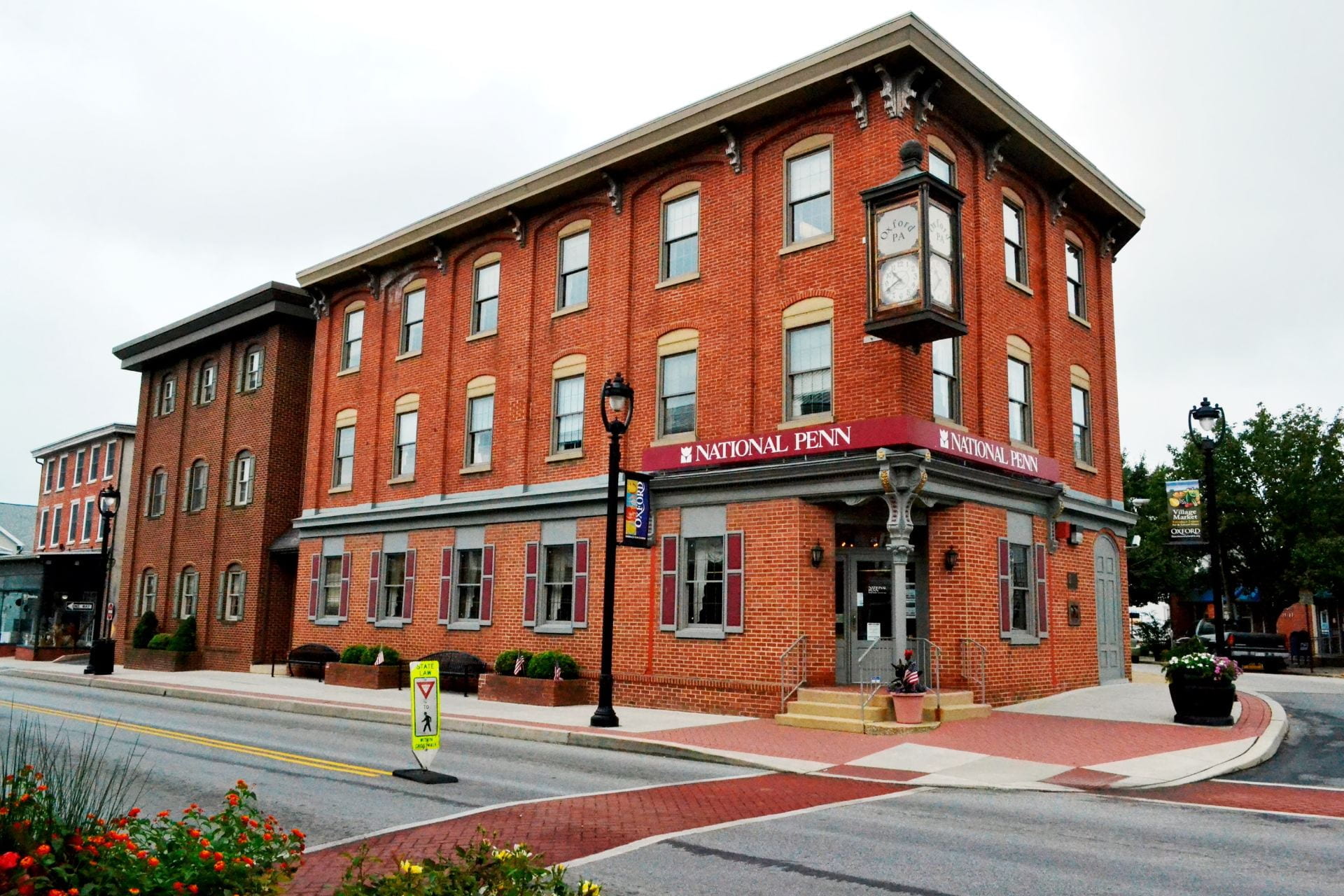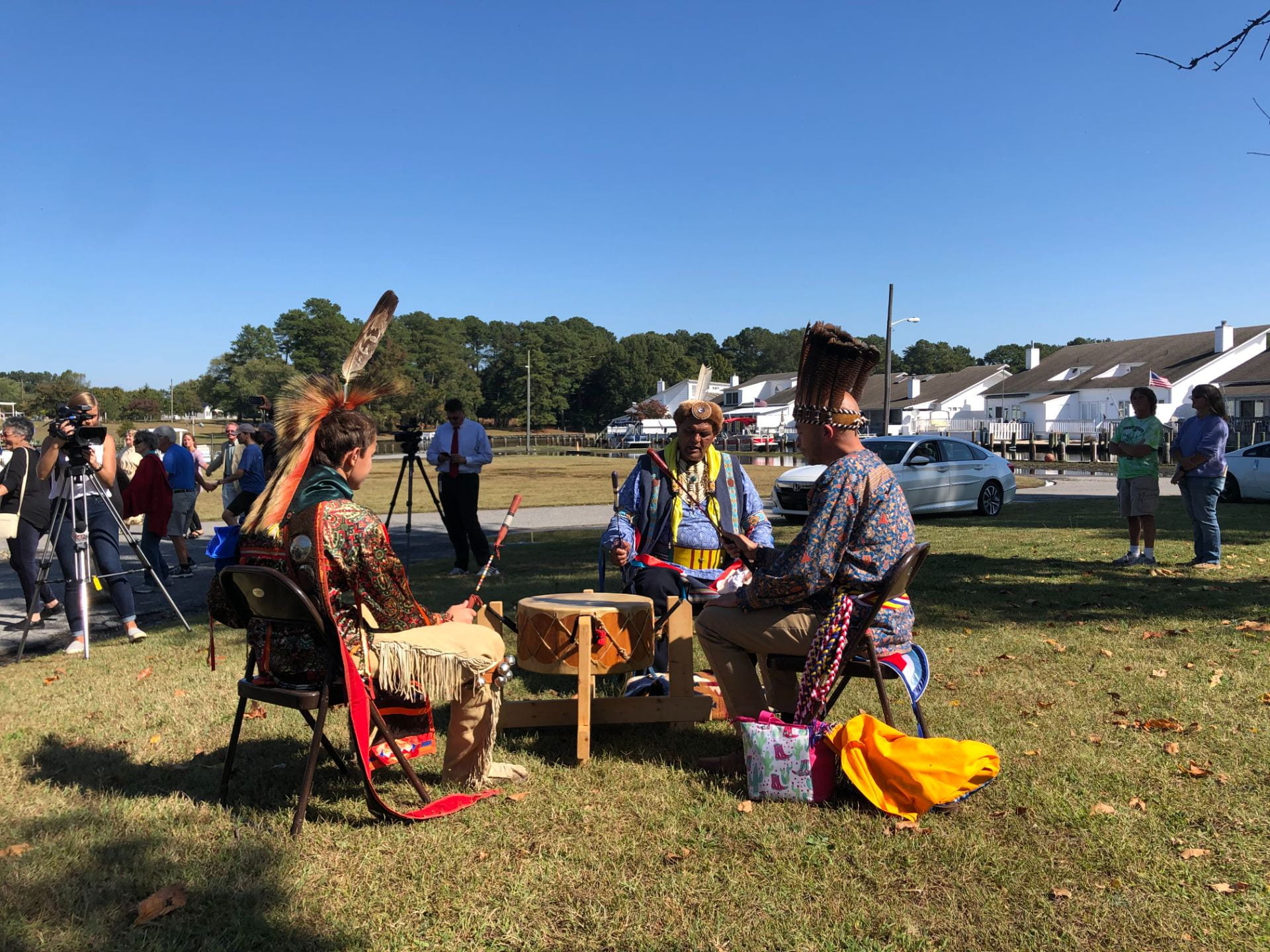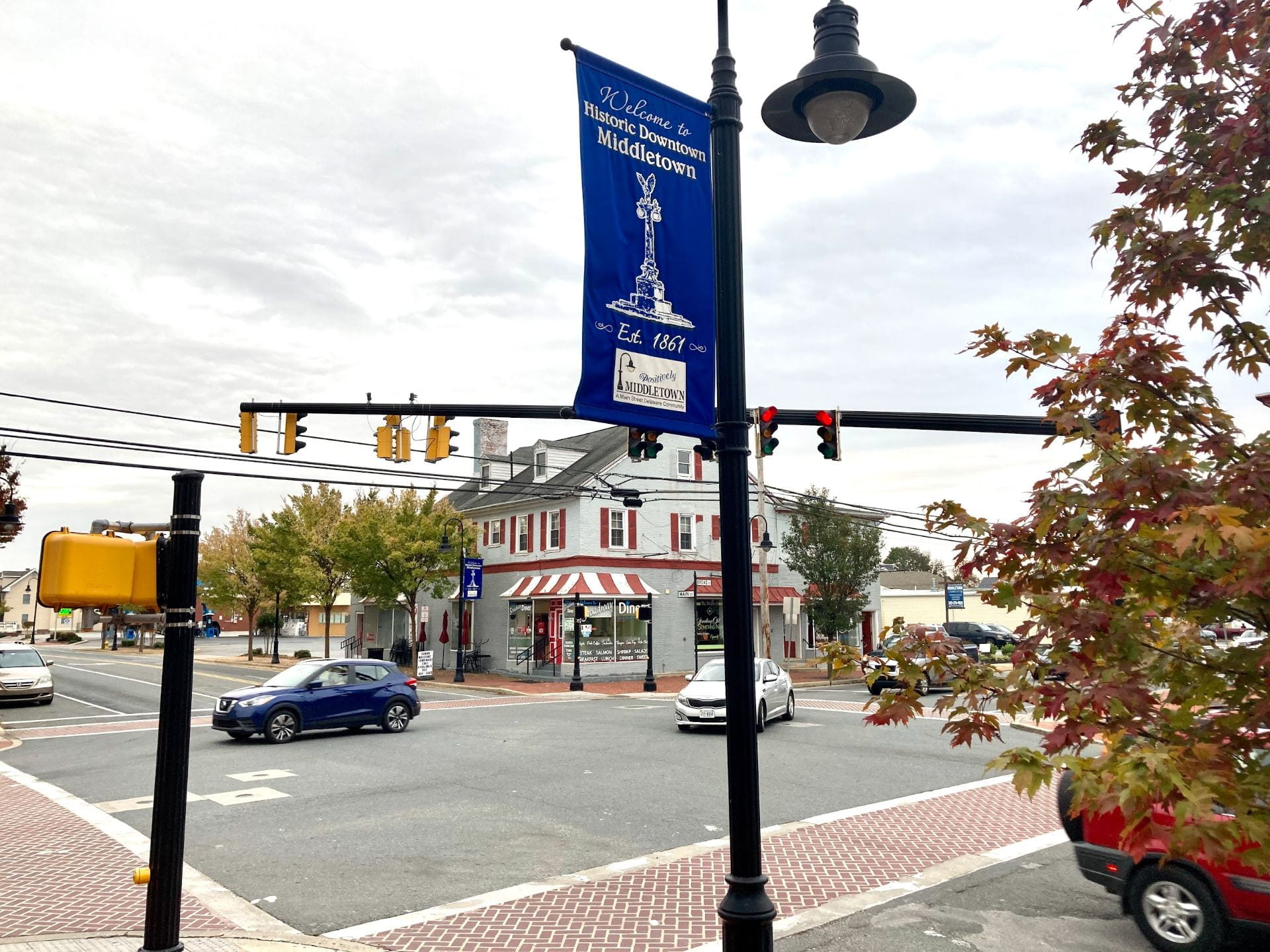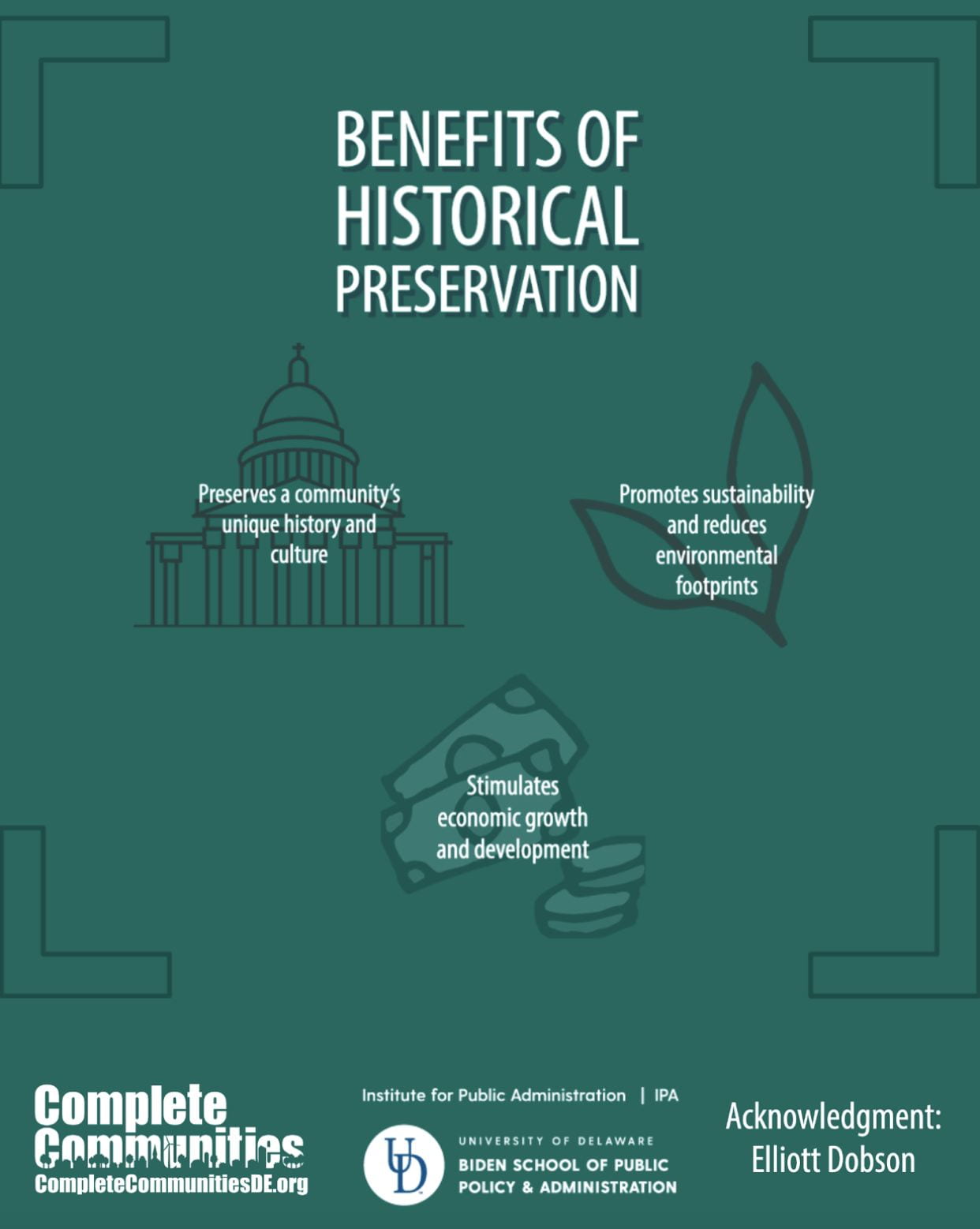HISTORICAL PRESERVATION
Overview
The purpose of historic preservation is to protect the unique heritage and built environment of a community. New materials and renovations should only be introduced in these historic sites if the original materials are dangerous due to age or unrepairable. The utilization of historical signs in these areas emphasize roadside locations, encourage drivers to potentially explore more roads, and educate citizens about local and regional history. It is crucial for local community leadership to realize that federal, and sometimes state, governments won’t initiate historic preservation on a local level. In most cases, towns will need to take initiative in preserving the majority of these historic sites.



Understand
Preservation is the identification, protection, and enhancement of historically and culturally important buildings, locations, and objects. Government agencies, private organizations and individual citizens each play a key role in the preservation efforts of these historic sites. The National Historic Preservation Act of 1966 (NHPA) provided the federal government with the tools to work with state and local governments to promote the preservation of historic sites. Today, the resources created by the NHPA continue to support historical conservation efforts across the United States.
Benefits of Historic Preservation
Strengthens Neighborhoods
The value of homes within historic districts increases more substantially than in comparable areas without any preservation or historical background. On average, buyers are more inclined to pay a higher cost for homes in areas with these landmarks. The preserved structures within these areas add personality and charm, enhance the pride of the neighborhood, and foster a strong cultural identity.
Compliments and Bolsters Heritage Tourism
Heritage tourism offers a multitude of opportunities for location-based economic development, especially in rural areas. A unique and attractive community attracts both new residents and businesses, further spurring the community’s economic status. Renovating both old residential spaces and multi-purpose buildings often drives labor growth more than a form of new construction would. State strategies help identify heritage tourism as particularly suitable and accustomed for rural economic development.
Encourages Local Economic Growth
The Delaware Byways Program began in 2000 when the Delaware General Assembly passed Senate Bill 320. The goal of this program is to identify and promote traveling on Delaware roads. All travelers are invited to support local businesses found at intersections and along these roads. The state initiated a rewards portion for participating in this program and for traveling on their roads, titled ByWays Bucks. ByWays Bucks function as coupon vouchers that can be redeemed for various special offers at many small businesses adjacent to Byways. This program not only encourages tourism within the state but also supports local small businesses.
Promotes Infill Development
In order for a community to effectively protect its character and encourage complementary development, they must leverage developing both existing infrastructure and new development of vacant/unused land. Historic preservation enables this goal by ensuring that old buildings maintain their characteristics and cultural significance, while also receiving the proper renovations needed. For example, a historic storefront can continue to function as a community staple commercial space, if it is properly preserved and actively maintained. Along with historic community spaces, the Delaware State Strategies also promotes rehabilitation of dilapidated housing to improve housing opportunities and equity within established communities.
Conserves Resources
Utilizing historic buildings and spaces helps reduce the need for costly demolitions and new construction. In terms of the carbon economy, this represents a significant savings. Just as repairing a 12-year old vehicle is far more carbon friendly than buying a new one, so too is the re-use of historic structures. Many of the existing features of these historic buildings such as sunshades, overhangs, and shutters are designed to utilize natural light and improve energy efficiency, thus further conserving natural resources while retaining the historic and cultural value. Moreover, with sufficient effort and engineering, most historic structures can be made to meet or exceed the energy efficiency of new construction.
Planning for the Future
Components of Historic Preservation Planning
A simple plan or mission statement recognizing the important role of preservation is an essential first step. Such plans may include historical resource maps or recommended preservation districts. Often these will be recognized and operationalized within a community’s comprehensive plan. Local governments should consider the potential impact of land-use change and development on existing historic resources and overall neighborhood character. A Delaware example is the Historical Preservation planning component City of Dover Comprehensive Plan. It includes a National Register of Historic Places listing for each site and historic district of the city’s historic neighborhood.
Local Government Strategies
Municipalities can adopt historic design standards or work with property owners to ensure that their structures generally conform with the characteristics of the historic districts within a particular community. For example, Odessa’s historic downtown is a treasure, and is one of the town’s greatest assets due to its historic charm and personable character. Accordingly, their historic standards plan recommends future land-use policies that allow for a limited number of small commercial facilities along the main street, which protect both the charm and personality of the architecture, and leave the majority of the spaces for community use rather than commercial.
Types of Historical Markers in Delaware
The Delaware Historical Marker Program was established in 1931 by the Delaware General Assembly. Delaware has utilized this program to implement more than 570 historical signs throughout the state. Local governments can work with the Delaware Sign Program to request for historical signs for buildings and districts within their communities. Markers for each county are numbered consecutively as suggested, preceded by NC (Newcastle), K (Kent), or S (Sussex).
Delaware Historical Society Research Library and Archives
The Delaware Historical Society Research Library and Archives in the City of Wilmington houses a collection of artifacts related to Delaware’s history, some of the collection is also available digitally.
How is Historic Property Zoned in Delaware?
New Castle County is a useful Delaware example. It employs at least one person tasked with historic planning. When new developments (or redevelopments) are proposed, this planner will review the plans and identify any potentially affected historical assets. Plans that affect neighboring historic sites are also reviewed by the Historic Review Board. The Historic preservation ordinances established within the United States and enforced by these organizations provides maximum protection for these historical buildings and districts. To date, more than 2,300 monumental protection ordinances have been enacted nationwide.
Act & Implement
How Can Historic Preservation be Used in Delaware?
Heritage conservation practices are one way communities can attract tourism funding. The state of Delaware played an important role in the early history of the Navy, beginning at the arrival of the Dutch in 1630 up until World War II. Because of this, efforts such as the preservation of Lewes’s Lightship Overfall, celebrate and commemorate the legacy of Delaware’s history. Communities can work with the State Historic Preservation Office to develop strategic conservation plans.
Preservation Delaware Organization: State Historic Preservation Office
Preservation Delaware, Inc. is a statewide nonprofit organization that aims to protect Delaware’s architectural heritage and historic environment through education, public policy initiatives, and technical assistance.
Maintaining Historic Buildings in Delaware
Historical preservation includes all activities carried out by the State Historic Preservation Office to identify historic sites. Many of Delaware’s “main street programs” are implemented to revitalize and update the historic downtown area. Heritage conservation employs the individual actions of the community, who proudly own and maintain their historic buildings.
Examples
Smyrna Opera House
Originally built in 1870, the Smyrna Opera House was fully restored and reopened in March 2003 as a community performing arts center. Operated by the nonprofit Smyrna Clayton Heritage Association, the Smyrna Opera House introduces and trains local creative, visual and performance artists, while providing affordable access to art and diverse cultural and artistic experiences. The Opera House serves as a resource for people of all ages and backgrounds in central Delaware.
Dover Historic Buildings
Dover Green Historic District is a national historic center located in Dover, Kent County, Delaware. It consists of seventy-nine contributing buildings centered around the Green and covering most of Dover’s eighteenth century settlements. Notable buildings include Eagle Tavern (before 1791), Kent County Courthouse (1875), Dover Century Club (1852), and Park Ridgeley House (1728). The district also has Bradford Loockerman House, Christ Church and the Old State House. The Green District became part of the First State National Historic Park on March 25, 2013, and is being managed in collaboration with the National Park Service.
Lewes Historic Preservation
The Historic Preservation Architectural Review Commission (HPARC) was established in May 2019. HPARC’s goal is to promote historic preservation in line with the community’s core values without sacrificing creativity or growth. The task of changing the appearance of structures visible from public roads requires, but is not limited to, the permission of HPARC. The HPARC User Guide on Housing Renovation and Construction in the Historic District of Lewes can be used to assist in this process.
Preliminary Land Use Service
The Preliminary Land Use Service (PLUS) coordinates state agency review of major land use change proposals prior to submission to local governments. The PLUS process was designed to help streamline and speed up state review. Historical preservation issues will be considered during the PLUS review.
How to regulate historic districts
Over 2,300 historic preservation laws have been established and enacted in the United States. Many municipalities only allow historic structures to be demolished if the property owner can prove financial difficulty or if the building presents a safety risk to the community. Communities can ensure that their land use regulations support, rather than impede efforts to safeguard historic sites through thorough planning and fine-tuning.


